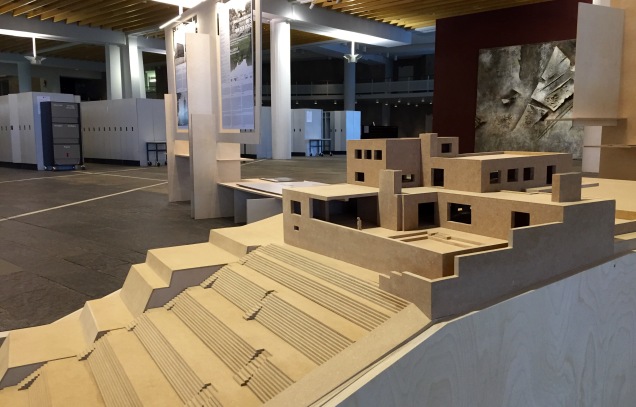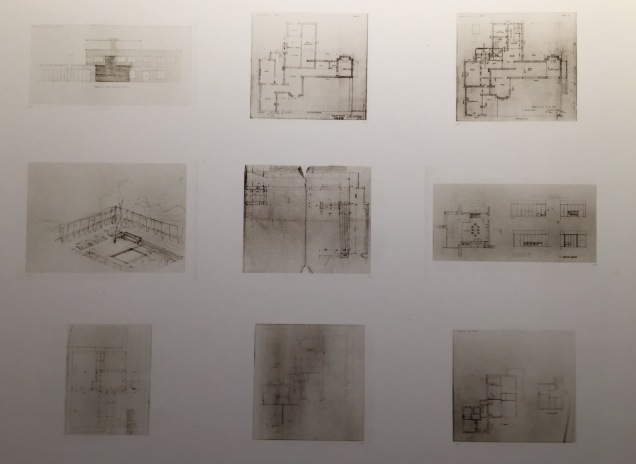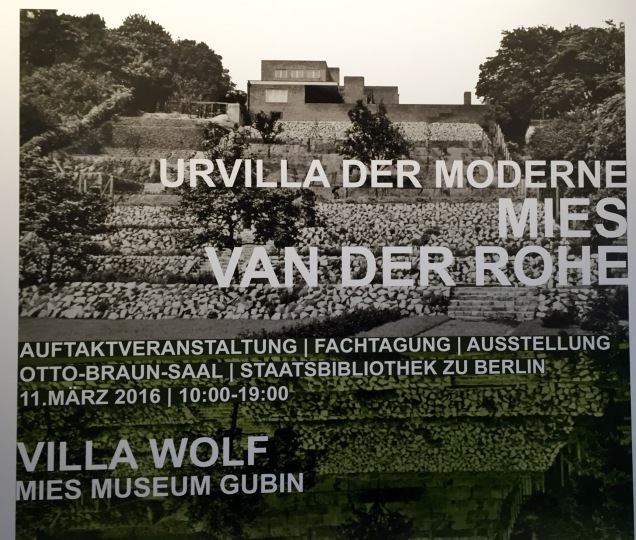Ludwig Mies van der Rohe’s first and last modernist works at Berlin’s Kulturforum

In the public entrance hall of Hans Scharoun’s Staatsbibliothek on Potsdamer Straße, there’s a temporary exhibition on a fantastic architectural project: the planned reconstruction of Ludwig Mies van der Rohe’s Villa Wolf in the now Polish town of Gubin.

Villa Wolf, built in 1925/6, was Mies’ first modernist construction, and it is generally accepted to also be the first modernist building in the world. Bombed in World War II and never reconstructed, it is now one of those mythical places of architectural history – just like Mies’ famous Barcelona Pavillion. Created for 1929’s World Fair, Mies built the Pavillion as a showpiece of Germany’s newfound intellectual creativity after the suffocating historicismof the imperial era. It was disassembled after the show and vanished, and only photographs survived. When it was reconstructed in 1986, it drew massive attention.

Showing this exhibition at the State Library creates a nice juxtaposition with Ludwig Mies van der Rohe’s very last design, the Neue Nationalgalerie built in 1969. It sits just across the road from the library and also is part of the Kulturforum. Mies returned to Berlin from the United States, where he had moved in 1937 to escape the Nazis, one more time to finish this project, which can be considered as the architect’s reconciliation with Germany.

And that’s exactly how the sponsors of the new Villa Wolf at Gubin see the project – as a reconciliation between Germany and Poland. As was the case in Frankfurt and Görlitz, two other towns on the Oder-Neisse border, the new border created in 1945 split Gubin and Guben (on the German bank of the river) in two. But when the building is completed, it will be a monument for one of Germany’s most famous architects, sitting on the Polish side of the river but overlooking Germany. Construction is planned to start in 2017 and the rebuilt villa will serve as museum for Mies van der Rohe’s work.

The exhibition at the State Library has now ended, but more information on the villa’s resurrection project can be found at www.villawolfgubin.eu.
Hi! I’m one of the students who worked on that project- I never got the chance to see the exhibition, as my exchange ended and I had to come back home. Do you have any more photos of the model? I worked on drawings of the terraces that the model was made by, were they there too? My ego needs to see them displayed 😉 thanks!
Hi Joanna, thanks for reacting! I’ll check what other pics I have. There were lots of drawings on display too but I didn’t photograph them all. I’m going back to the Stabi sometime this week so I’ll check if the exhibition is still there. BRs Robin